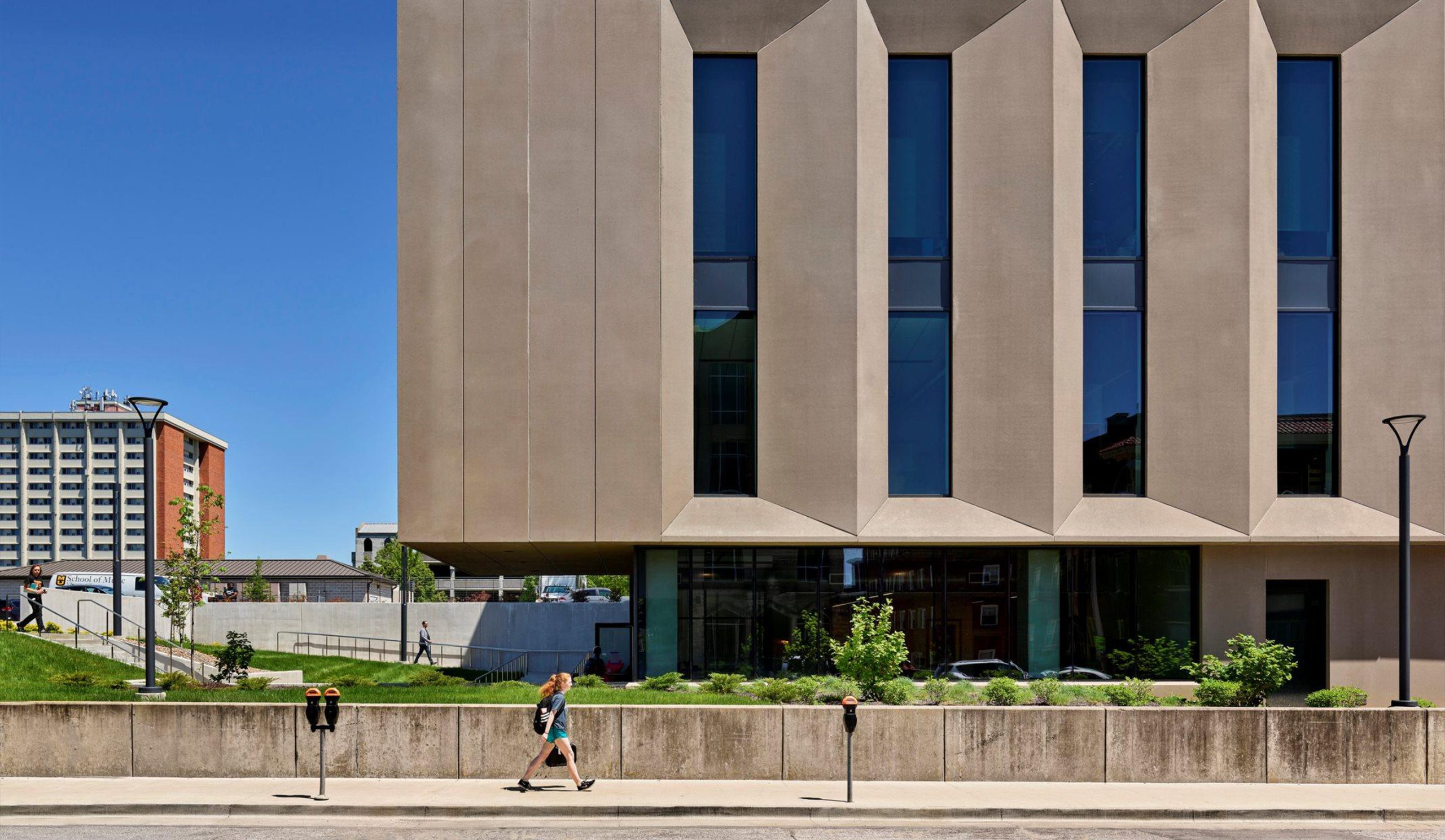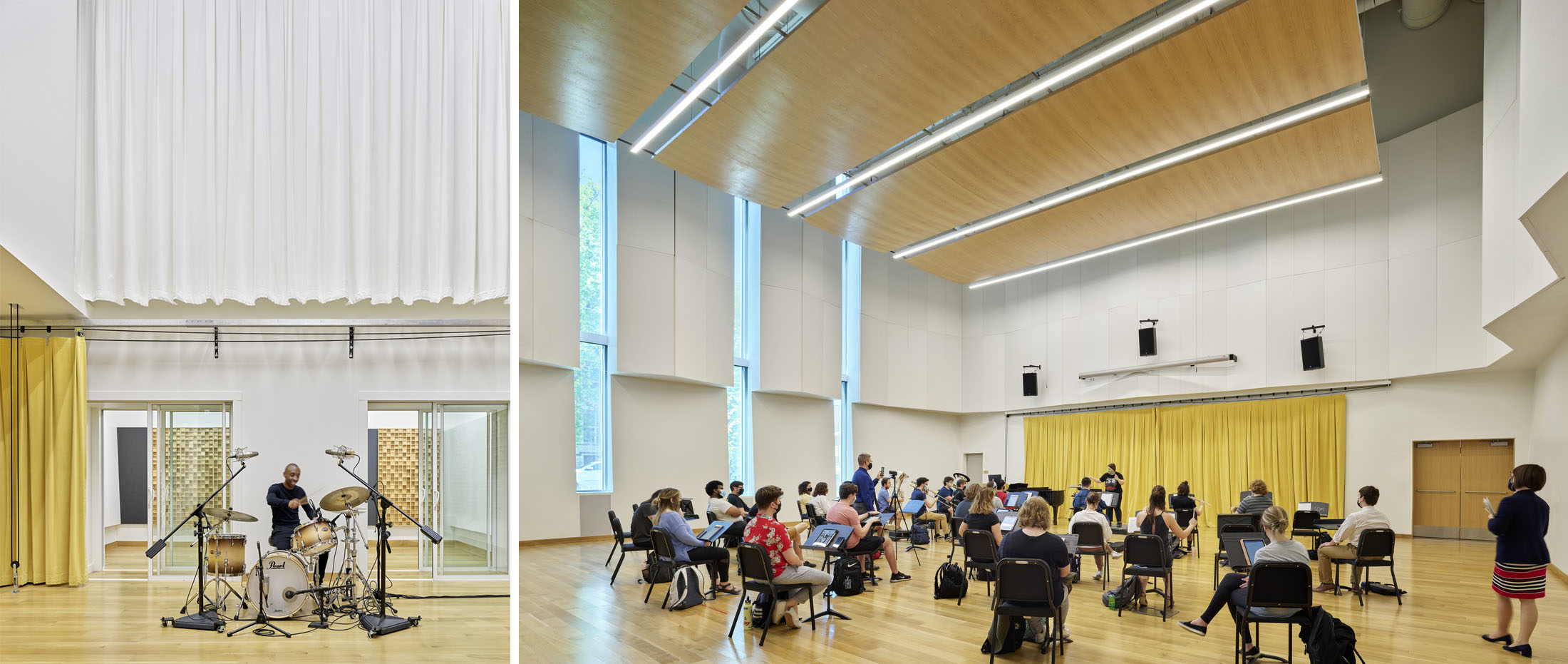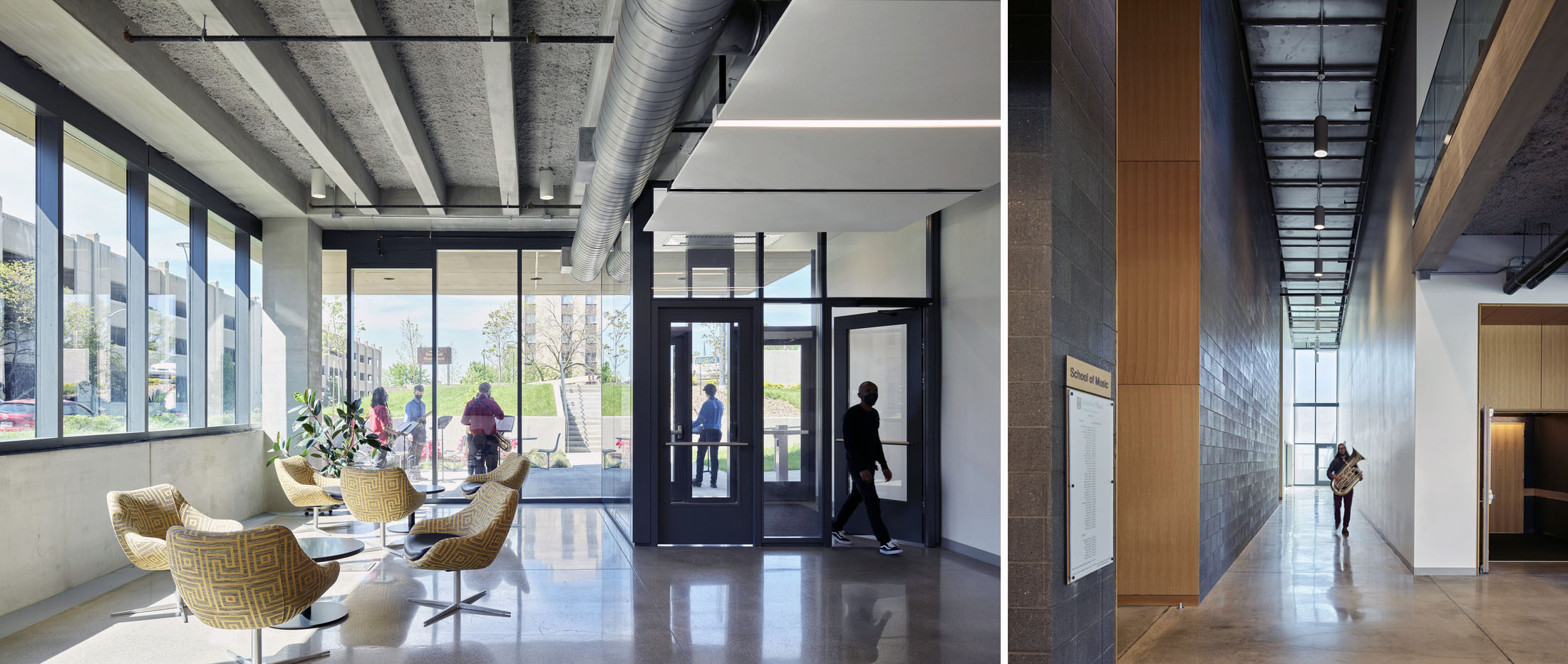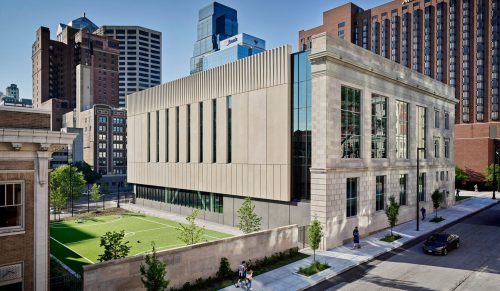
Finding Creative Synergies at University of Missouri-Columbia’s Sinquefield Music Center
The University of Missouri-Columbia (MU) School of Music has already been abuzz with back-to-school activity this Fall 2021 Semester, from welcoming students to Marching Mizzou Band Camp in August to the start of new classes, auditions, and upcoming recitals and performances. Home to this flourish of campus activity is the School of Music’s new Jeanne and Rex Sinquefield Music Center.
The Sinquefield Music Center, which celebrated its opening in early 2020, has created a renewed campus presence for the School of Music and achieved a pivotal goal for the program to establish a cohesive and state-of-the-art facility to call home. In previous years, MU School of Music students and faculty had grown accustomed to attending classes dispersed throughout campus in facilities with limited acoustics and space capacity. The School of Music recognized a need for a new facility that would support MU’s exemplary collegiate music program and bring students together in practice, performance, and creative synergy.

The School of Music’s vision is brought to life in the Sinquefield Music Center – an elegant and engaging building on MU campus, located at the corner of Hitt Street and University Avenue. Students and visitors walking along this northern edge of campus are introduced to a dynamic cultural corridor that allows music to extend into the campus community through recitals, concerts, or impromptu classes/performances taking place in one of the two large entry plazas. View the Sinquefield Music Center’s calendar of upcoming events here.
Within the Sinquefield Music Center, students and faculty are greeted by inspiring, comfortable spaces that support the School of Music’s composition, instrumental, vocal, and editing and recording curricula. The design for the facility was shaped by a primary goal of enhancing the human experience, both by providing acoustically advanced facilities that increase functionality and by creating spaces which promote student creativity and well-being.
The building’s program is laid out in a simple, yet incredibly thoughtful way, resembling a series of ‘boxes’ slightly pulled apart to establish a strong acoustical atmosphere within practice and performance spaces. The most acoustically sensitive spaces, including the percussion rooms, are situated on the ground floor of the building to isolate and reduce the sound and vibration transfer to other areas.

Rehearsal and performance spaces are designed for acoustic flexibility, allowing the School of Music to support a range of different musical compositions, rehearsals, recordings, and performances. The large instrumental rehearsal room and choral rehearsal room are ‘tunable’ through operable acoustic drapes that can be deployed or retracted which will either liven or deaden the acoustical atmosphere depending on the type of ensemble or preferences of the musicians.
Within the traditional performance rehearsal space, a flexible floor plan enables the room to accommodate a series of different purposes. Through the enlargement of the flat floor area of this room beyond the area of a typical choral rehearsal space, the space is designed to be ‘reversible’ which allows tier risers to be used by the musicians for choral rehearsals or flipped to be used as tiered seating for an audience viewing ensemble or opera performances. Additional flexibility is provided through operable wood walls that fold out to create a band shell-like form to meet directional requirements for performances of various scales and through concealed white boards within the room’s walls which can be utilized when the space is needed in a classroom format. These rooms provide a substantial volume for acoustics and are outfitted with the ability to record and stream performances both to in-person and virtual audiences.

Traditionally, music schools can be inward-facing facilities, accommodating a series of practice rooms and rehearsal spaces that cater to individuals or small groups of musicians, making it difficult and costly to incorporate large expanses of glass into these spaces. In an effort to counteract this trend, the Sinquefield Music Center’s corridors serve as connective ancillary spaces with large windows that provide a sense of relief and a connection back to nature while orienting visitors throughout the building with a series of daylight vistas. Practice and performance spaces also provide an abundance of natural daylight and views which are essential for not only human health and wellness but also inspiration.
“This music center belongs to all of us, and I’m excited to imagine the kinds of new community-university collaborations that will arise because of this beautiful facility. As the Chancellor has already said, music brings people together. This music center brings us together – people from across campus, throughout Columbia, and Missouri, and well beyond.”
— DEAN PATRICIA OKKER, SINQUEFIELD MUSIC CENTER GRAND OPENING EVENT, FEBRUARY 2020
The Jeanne and Rex Sinquefield Music Center is a facility that aims to inspire and share the exciting work of the School of Music program with the MU campus and Columbia community.

